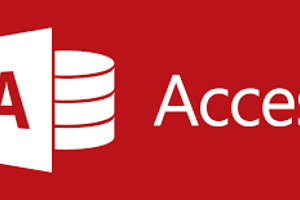Podcast
Questions and Answers
What is a benefit of the navigational language in the Network Model?
What is a benefit of the navigational language in the Network Model?
- Structural independence
- Optimal navigation through the database (correct)
- Promotes database integrity
- Conformance to standards
What is a disadvantage of the Network Model?
What is a disadvantage of the Network Model?
- System complexity (correct)
- Data access flexibility
- Handles more relationship types
- Data independence
Who developed the Relational Model?
Who developed the Relational Model?
- E.F.Codd (correct)
- IBM
- SQL Server
- ORACLE
What is a characteristic of the Network Model?
What is a characteristic of the Network Model?
What is a limitation of the Network Model?
What is a limitation of the Network Model?
What is the primary objective of creating the Network Model?
What is the primary objective of creating the Network Model?
What is the function of the Subschema in the Database Task Group (DBTG) report?
What is the function of the Subschema in the Database Task Group (DBTG) report?
What is the term used to describe the relationship between records in the Network Model?
What is the term used to describe the relationship between records in the Network Model?
What is the advantage of the Network Model in terms of data relationships?
What is the advantage of the Network Model in terms of data relationships?
What is the purpose of the Database Task Group (DBTG) created by the Conference on Data Systems Languages (CODASYL)?
What is the purpose of the Database Task Group (DBTG) created by the Conference on Data Systems Languages (CODASYL)?
What is the role of the Data Management Language (DML) in the Network Model?
What is the role of the Data Management Language (DML) in the Network Model?
What is the purpose of Chen Notation?
What is the purpose of Chen Notation?
What is the limitation of the Entity Relationship Model?
What is the limitation of the Entity Relationship Model?
What is the key feature of the Object-Oriented Data Model?
What is the key feature of the Object-Oriented Data Model?
What led to the popularity of Object-Oriented Data Modeling?
What led to the popularity of Object-Oriented Data Modeling?
What is the benefit of the Object-Oriented Model?
What is the benefit of the Object-Oriented Model?
What is the purpose of classes in the Object-Oriented Model?
What is the purpose of classes in the Object-Oriented Model?
Flashcards are hidden until you start studying
Study Notes
Network Model
- Developed as an alternative to the hierarchical model
- Handles more relationship types than the hierarchical model
- Provides data access flexibility and promotes database integrity
- Conforms to standards
- Uses navigational language with constructs like FIND, FIND member, FIND owner, FIND NEXT within set, GET, etc.
- Allows programmers to navigate optimally through the database
Disadvantages of Network Model
- Navigational and procedural nature of processing
- System complexity
- Lack of structural independence
- Database contains a complex array of pointers that thread through a set of records
- Little scope for automated "query optimization"
Relational Model
- Developed by E.F. Codd (IBM) in 1970
- First commercial system in 1981-82
- Created to represent complex data relationships more effectively than the hierarchical model
- Improves database performance
- Imposes a database standard
Crucial Database Components (DBTG report)
- Schema: Conceptual organization of entire database as viewed by the database administrator
- Subschema: Defines database portion seen by application programs that produce desired information from data contained within the database
- Data Management Language (DML): Defines data characteristics and data structure in order to manipulate the data
- Schema Data Definition Language (DDL): Enables database administrator to define schema components
- Subschema DDL: Allows application programs to define database components that will be used
- DML: Manipulates database contents
Network Model Basic Structure
- Resembles hierarchical model
- Collection of records in 1:M relationships
- Relationship is called a Set: Set is composed of at least two record types
- Owner: Equivalent to the hierarchical model’s parent
- Member: Equivalent to the hierarchical model’s child
Network Model Advantages
- Ability to model complex relationships and represents semantics of add/delete on the relationships
- Crow’s foot and Chen Notations can be used for graphical representation
- Entity is mapped to a relational table
- Entity instance (occurrence) is a row in the table
- Entity set is a collection of entities at any time
- Connectivity labels types of relationships
- Diamond connected to related entities through a relationship line
- Relationships are expressed using Chen notation
- Relationship name is written inside the diamond
Entity Relationship Model
Advantages
- Exceptional conceptual simplicity
- Visual representation
- Effective communication tool
- Integrated with the relational data model
Disadvantages
- Limited constraint representation
- Limited relationship representation
- No data manipulation language
- Loss of information content
Object-Oriented Model
- Developed by Hammer and McLeod in 1981 as a semantic data model (SDM)
- Modeled both data and their relationships in a single structure known as an object
- Basis of object-oriented data model (OODM)
- OODM becomes the basis for the object-oriented database management system (OODBMS)
- Object is described by its factual content
- Includes information about relationships between facts within object and relationships with other objects
- Subsequent OODM development allowed an object to also contain operations
- Object becomes basic building block for autonomous structures
Object-Oriented Model Basic Structure
- Object: abstraction of a real-world entity, contains operations and is self-contained and forms a basic building-block for autonomous structures
- Attributes describe the properties of an object
- Objects that share similar characteristics are grouped in classes
- Classes are organized in a class hierarchy
- Inheritance is the ability of an object within the class hierarchy to inherit the attributes and methods of classes above it
Advantages of Object-Oriented Model
- Adds semantic content
- Visual presentation includes semantic content
- Database integrity
- Both structural and data independence
- Persistent programming languages based OODB target applications of that form that have high performance requirements
Studying That Suits You
Use AI to generate personalized quizzes and flashcards to suit your learning preferences.




